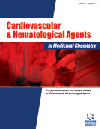
Full text loading...
We use cookies to track usage and preferences.I Understand

Direct Oral Anticoagulants (DOACs) have transformed the management of thrombotic disorders, offering a more convenient and effective alternative to traditional vitamin K antagonists (VKAs). However, assessing thrombotic risk in patients treated with DOACS remains crucial due to the potential for recurrent events. Current clinical risk scores have limitations in predicting and monitoring venous thromboembolism (VTE) risk in specific DOAC populations. Several emerging biomarkers show promise in assessing thrombotic risk in patients treated with DOACS. Genetic factors like VKORC1 and CYP2C9 variants are well-established determinants of warfarin response, but the genetic landscape for DOAC outcomes appears more complex. Rare variants and polygenic approaches may play a role in personalizing anticoagulation therapy. Elevated factor VIII levels are associated with increased VTE recurrence risk after anticoagulation withdrawal in cancer-associated thrombosis (CAT) patients. In contrast, the circulating tissue factor is not useful for predicting VTE in this setting. Soluble P-selectin has emerged as a good marker of VTE recurrence, and its inclusion in the Vienna CATS risk model improves VTE prediction in cancer patients. While these biomarkers hold promise, larger studies are needed to validate their utility and establish standardized assays. Caution is warranted in patients at high bleeding risk. Integrating clinical factors, genetics, and circulating biomarkers will likely optimize thrombotic risk assessment in patients treated with DOACS. Continued research is crucial to develop personalized anticoagulation strategies to balance thrombosis and bleeding risks.

Article metrics loading...

Full text loading...
References


Data & Media loading...